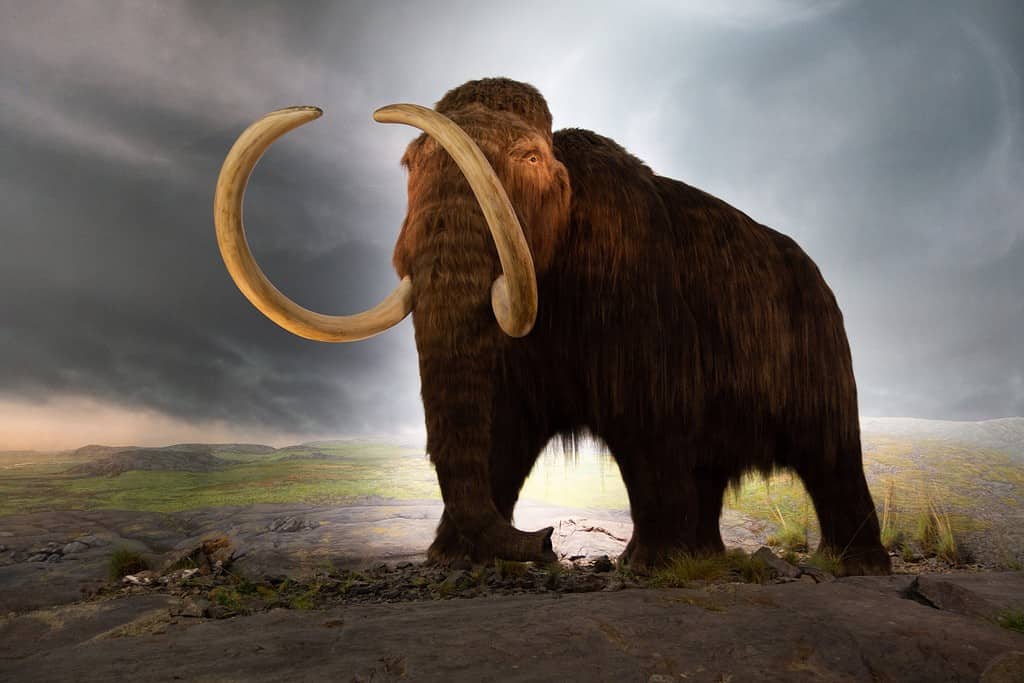
In the Mesozoic Era, dinosaurs were the undisputed rulers of the land. The Argentinosaurus, possibly the largest dinosaur ever, stretched up to 100 feet long and weighed around 100 tons. These creatures evolved into such massive sizes for various reasons, including defense against predators, efficient feeding strategies, and thermoregulation.
Following the dinosaurs‘ extinction, mammals took center stage. With so many ecological niches suddenly vacant, our mammalian ancestors quickly swelled in size from mouse-sized to legendary megafauna dimensions, exemplified by the wooly mammoth and the towering Megatherium, a giant ground sloth.
In the 19th century, American paleontologist Edward Drinker Cope noticed these patterns and gathered data that eventually led him to conclude that population lineages are likely to be larger than their ancestors. This idea has remained etched in evolutionary biology as Cope’s Rule.
An outdated rule of evolutionary biology
Cope’s Rule is rooted in the observation that larger animals often possess certain evolutionary advantages, such as improved survival rates, enhanced predatory or defensive capabilities, and greater efficiency in energy utilization. However, it’s by no means perfect. Reptiles, for instance, have drastically reduced in size from the era of dinosaurs to present-day geckos and sparrows. Similarly, Alaskan horses experienced a 12% size reduction before their extinction 14,500 years ago. Exceptions have been found throughout geological time, which is why a better name would be Cope’s Rule (of Thumb).
In fact, in our era, we seem to be witnessing a reverse trend to the one observed by Cope. There are no longer huge animals like sauropods or giant sloths, and this has been the case for thousands of years. This stark contrast in size raises a fascinating question: what drives these dramatic changes in animal size over millions of years? Recent findings may finally shed light on this mystery.
Lead researcher Shovonlal Roy, an ecosystem modeler from the University of Reading, explains that animal sizes can fluctuate significantly over long periods, depending on their habitat or environment. The study used computer models to simulate evolutionary scenarios. Researchers found two main ecological drivers are pivotal in shaping animal size: the intensity of competition and the risk of extinction.
Large animals that keep on increasing in size to mitigate the risk of extinction act as a mechanism that neatly explains Cope’s Rule. But large size works in a species’ favor only up to a point — when resources suddenly dwindle, large size becomes an extinction risk, as was the case for the dinosaurs. When the resource pool in a habitat shrinks, so does animal size due to heightened competition.
The study highlights three distinct patterns of body-size change emerging under different conditions:
- Gradual Size Increase Over Time: This pattern emerges when competition between species is primarily based on body size rather than niche differences, as observed in several marine animal species.
- Size Increase Followed by Extinctions: In this scenario, the largest animals recurrently go extinct, allowing other species to evolve into larger bodies.
- Gradual Size Decrease Over Time: Contrary to Cope’s rule, this pattern occurs when there is high competition and overlapping habitat and resource use, leading to evolutionary pressure to reduce in size.
Because resource availability and environmental conditions are always changing on a geological timeline, we see trends of gigantism and shrinkage across populations. And, currently, in the words of the wise George Constanza, we’re in for a massive shrinkage.
A 2019 study reviewed more than six decades worth of data from across the world and found that most species — from fish to plants to mammals — are shrinking over time. Polar bears are only two-thirds of the size they used to be only 30 years ago. This trend can be explained by increasingly inhospitable conditions, such as climate change and other factors related to human activity that lead to warmer temperatures and decreased food availability. To adapt, animals have had to cut down in size to do more with less.
This trend is particularly worrisome because ecosystems are structured in terms of species size — large animals tend to eat smaller animals, which in turn prey on smaller animals. But now, the food chain is at risk of major disruption. Over the next turn of the evolutionary clock, Earth’s ecology will see some huge changes far removed from Cope’s Rule.
The new findings appeared in the journal Communications Biology.
This article originally appeared in January 2024 and was updated with new information.


